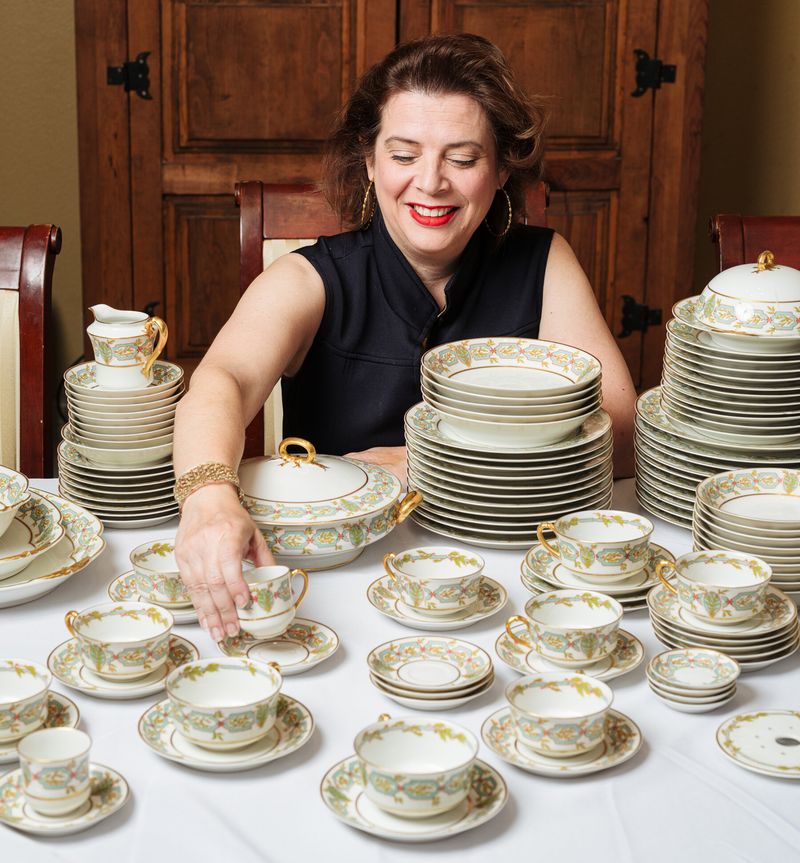As society marches forward, certain customs cherished by the Baby Boomer generation may not withstand the test of time. These traditions, once integral to daily life, are quietly being replaced by modern conveniences and digital alternatives. The cultural shift is driven by technology, changing lifestyles, and evolving values. Some traditions may leave behind a sense of nostalgia, while others may not be missed at all. This list explores fifteen such traditions, examining how they once played a significant role in people’s lives and why they might not survive for future generations. Join us as we explore these fading customs that highlight the ever-changing tapestry of human culture.
Handwritten Letters

Handwritten letters, once the mainstay of personal communication, carried with them a personal touch that emails simply cannot replicate. The process of writing, sealing, and sending a letter was an intimate exercise. Today, the digital age has made instant communication the norm, and the art of letter writing is fading into oblivion.
With instant messaging, emails, and social media, the need for handwritten correspondence has diminished. Younger generations find convenience in the immediacy and brevity of digital text, leaving little room for the patience required to write a letter.
Despite its decline, the nostalgia surrounding handwritten letters remains, with some cherishing this practice as a token of sincerity.
Fine China & Formal Dinnerware

In the era of the Baby Boomers, a wedding china set was a prized possession, often displayed proudly in a cupboard. Each piece was not just dishware but a symbol of elegance and tradition. However, today’s younger generation prioritizes practicality over formality.
The trend now leans towards everyday dishes that can withstand the rigors of modern life. Fine china, often associated with special occasions, is now being left behind as minimalism and simplification take center stage.
Despite their beauty and craftsmanship, these delicate pieces are being replaced by more robust and versatile alternatives, signaling a shift in dining culture and lifestyle.
Landline Telephones

The landline telephone, once a staple in every household, was more than a communication tool; it was a fixture around which family life revolved. Conversations held on these devices had a certain charm and formality that mobile phones lack.
As mobile technology advances, the landline is becoming obsolete. Home phone etiquette, a subtle art once taught to children, is also disappearing. The modern family now relies on mobile phones, making landlines seem redundant.
Yet, they still hold a nostalgic value for those who grew up with them, representing a simpler time when life seemed less hurried and more connected.
Holiday Cards by Mail

Holiday cards, with their festive designs and heartfelt messages, were once a cherished way to connect during the holiday season. Sending and receiving cards was an annual tradition that heralded the joy of the season.
With the rise of digital greetings and social media, this custom is fading. People now opt for digital cards, group texts, or social media posts to send their holiday wishes. The tangible excitement of receiving a card by mail has been replaced by instant digital communication.
While some still find joy in this tradition, many have embraced the convenience of technology, leading to the slow demise of mailed holiday cards.
Ironing Clothes Regularly

Regularly ironing clothes was once an essential part of household chores, ensuring that garments looked crisp and presentable. The rhythmic motion of ironing was both a task and a ritual for many.
Today’s fast-paced lifestyle, combined with the advent of wrinkle-release sprays and low-maintenance fabrics, has reduced the need for regular ironing. People now favor convenience over the traditional neatness of pressed clothing.
Although ironing is still practiced, it’s less common in the average household. The decline of this tradition highlights a shift towards efficiency and practicality in everyday life.
Using Cash and Writing Checks

Carrying cash and writing checks were once routine financial practices, teaching lessons in budgeting and accountability. The physicality of money and checks offered a tangible connection to spending.
The digital revolution has transformed financial transactions, with digital payments, cards, and apps making cash and checks seem antiquated. Today, swiping a card or tapping a phone is the norm, and balancing checkbooks a lost art.
For many, the tactile experience of handling money is nostalgic, yet the convenience and speed of digital options have overshadowed these traditional methods.
Saving Newspaper Clippings

Saving newspaper clippings was a meaningful way to preserve memories and stay informed. Families would cut out articles and pictures, pasting them into scrapbooks as a record of life events.
In the digital age, the practice is becoming obsolete. Screenshots, digital bookmarks, and online archives have replaced the need for physical cutouts. The ease of accessing news online has changed how we interact with information.
While some cherish the tactile nature of newspaper clippings, the digital alternatives offer convenience and instant access, leading to the gradual decline of this once-common tradition.
Sewing and Mending at Home

Home sewing and mending, once a common household skill, provided a sense of accomplishment and creativity. Fixing a hem or darning socks was not only economical but also a way to express personal style.
With the rise of fast fashion and affordable clothing, the need for home sewing has diminished. People now prefer buying new rather than repairing old garments, leading to a decline in sewing skills.
The tradition of sewing at home represents a bygone era of self-reliance and resourcefulness, now overshadowed by convenience and consumerism.
Calling Instead of Texting

A phone call was once the primary means of having meaningful conversations. The sound of a loved one’s voice provided comfort and connection. Today, texting and direct messaging dominate communication, offering quick, often impersonal exchanges.
For younger generations, texting is more efficient, allowing multitasking and avoiding the perceived intrusiveness of a call. The art of conversation is being transformed as texts replace voice.
Those who grew up calling may miss the warmth of a voice, but the shift to digital communication reflects changing social norms and technological advancements.
Keeping Printed Photo Albums

Printed photo albums, once a cherished family heirloom, preserved memories in a tangible form. Flipping through the pages provided a tactile connection to the past.
With cloud storage and digital frames, physical photo albums are becoming rare. Photos are now shared and stored online, providing accessibility but lacking the physical intimacy of an album.
While some still appreciate the nostalgia and permanence of a printed album, the convenience of digital storage has made traditional albums less common, reflecting a shift towards a digital-centric lifestyle.
Sunday Family Dinners

Sunday family dinners were once a cornerstone of family life, bringing generations together for conversation and connection. These meals fostered a sense of unity and tradition.
Modern schedules, with their demand for flexibility and individuality, have made regular family gatherings a challenge. Families now often eat separately, on-the-go, or at different times.
The decline of this tradition speaks to changing societal priorities and lifestyles, where convenience often trumps traditional family rituals.
Watching Live TV Together

Watching live TV as a family was once an event, creating shared experiences and memories. Shows were anticipated and discussed, often forming the backdrop of family life.
The advent of streaming services and on-demand viewing has changed how we consume TV. Scheduled programming is less attractive compared to the flexibility of watching what you want, when you want.
Though some may miss the communal aspect of live TV, the convenience of streaming is reshaping family entertainment, reflecting a shift towards individual choice over shared experiences.
Formal Etiquette Rules

Formal etiquette, with its handwritten thank-you notes and RSVP cards, once guided social interactions. These rules provided structure and respect in communication.
As society becomes more casual, the formality of these practices is fading. Digital communication offers convenience, reducing the need for traditional etiquette.
While some lament the loss of these refined customs, others welcome the relaxed standards that reflect a more informal and accessible world.
Using Encyclopedias and Reference Books

Encyclopedias were once a cornerstone of knowledge in the home, a resource for homework and curiosity. Their presence signaled a commitment to education and learning.
Now, the internet, with its vast and immediate access to information, has made printed encyclopedias obsolete. Google and Wikipedia offer knowledge at our fingertips, anytime, anywhere.
While some appreciate the nostalgia of leafing through a book, the digital alternatives are more practical, leading to the decline of printed reference materials.
Owning Home Toolkits and Doing DIY Repairs

Home toolkits and DIY repairs were once marks of self-sufficiency, skills passed down through generations. Tackling small home repairs was a source of pride and practicality.
With the rise of service apps and outsourcing, fewer people engage in DIY home maintenance. Younger generations often prefer hiring professionals, valuing time over hands-on experience.
The decline of this tradition reflects a shift away from self-reliance towards convenience, as technology changes the way we approach home care.

Comments
Loading…